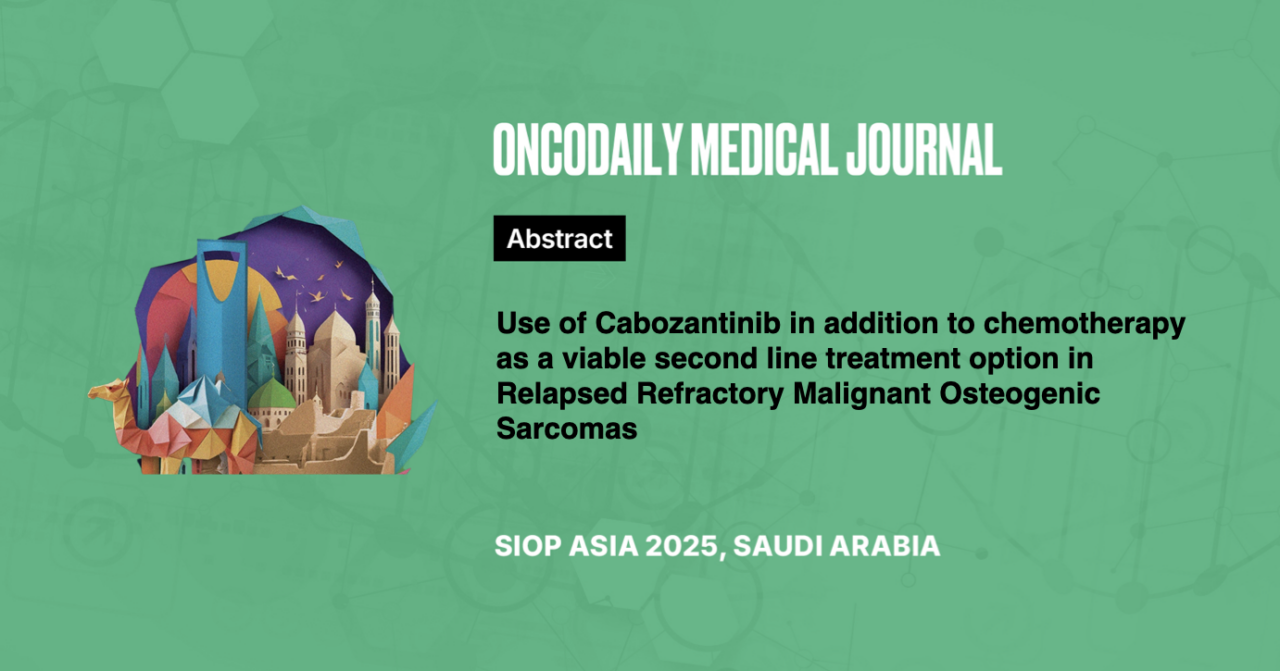Abstract
Introduction: Osteosarcoma (OS) and Ewing Sarcoma (ES) are the most common primary bone sarcomas in children. There is no standardized second line treatment for refractory/relapsed (r/r) OS and ES. Targeting aberrant angiogenesis and MET signaling have shown efficacy in research models. Cabozantinib is an oral multiple kinase inhibitor which targets vascular endothelial growth factor receptor 2, c-MET and RET.
Methodology: We collected retrospective outcome data and toxicity profile of patients with r/r OS and ES receiving cabozantinib with or without second line chemotherapy. Cabozantinib was given at the dose of 40 mg for children with BSA < 1.2 m2 and 60 mg for BSA 1.2 m2 for 14 days (D8 – D21) along with chemotherapy or daily when given alone.
Results: Twelve patients with (r/r) OS(n=8) and ES (n=4) received cabozantinib (n=1 ES without chemotherapy, n=11 with chemotherapy). Median age was 12 years (range 9 to 17 years). 6 (50%)were female and 6 (50%) male. Five (42%) children (OS=3; ES=2) had disease progression on primary treatment, three(25%) (OS=3) had residual disease at the end of treatment, and four (33%) (OS=3 ES=1) relapsed post-treatment. 10 (83%) had lung metastasis and two (17%) had metastasis at other sites in addition to lung. Children received median four (range 1-9) chemotherapy cycles. Most common toxicity was myelosuppression (n=5). Three children had grade 3 febrile neutropenia.
Other toxicities were mucositis(n=1), transaminitis(n=2), and palmo-planter syndrome(n=1). At 6 months of therapy post relapse we had one complete response (8%), four partial response (33%), one stable disease (8%) and 6 (50%) progressive disease. Median Event free survival was 9 months (SD 5.5 months) and Median OS 10 months ( SD 7.9 months) with an overall response rate of (n=5) (40%).
Conclusion: Combination of Cabozantinib and chemotherapy is a feasible second line therapy in relapsed/refractory osteogenic bone sarcomas with minimal toxicity.





